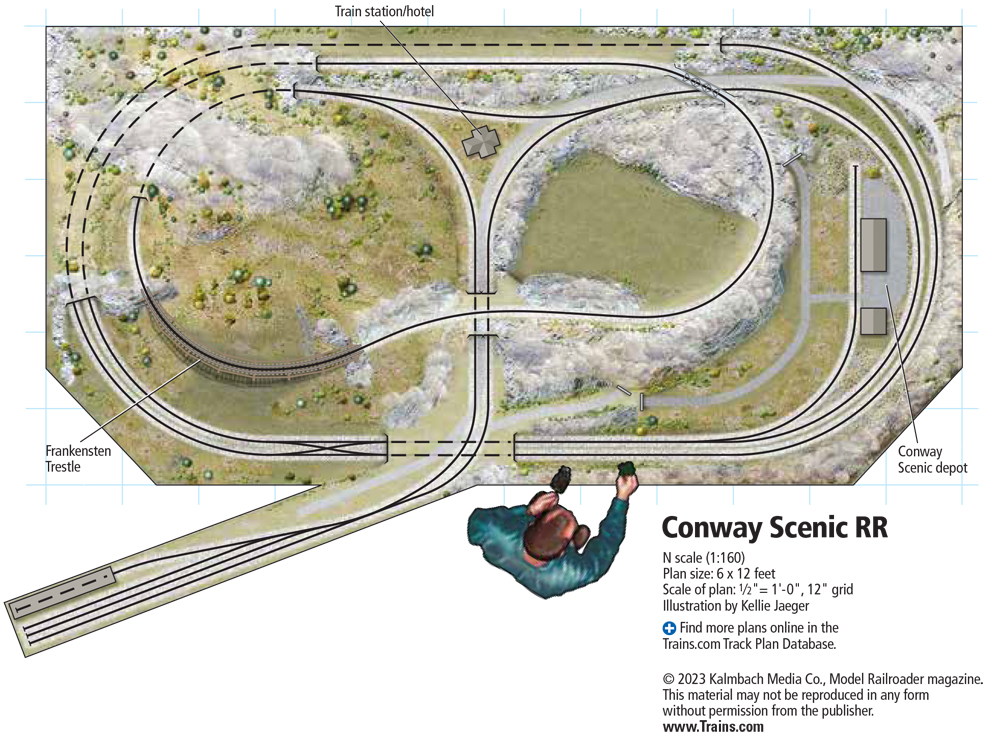
Facts & features Name: Conway Scenic RRScale: N (1:160)Size: 6 x 12 feetPrototype: freelancedLocale: New Hampshire’s White Mountain regionEra: modernStyle: islandMainline run: 45 feetMinimum radius: 36″Minimum turnout: No. 8Maximum grade: 3.5%Benchwork: open gridHeight: 36″Roadbed: CorkTrack: Peco code 80 flextrackScenery: extruded-foam insulation boardBackdrop: painted on wallsControl: SCADA automation system Download this trackplan! Buy the […]
Read More…
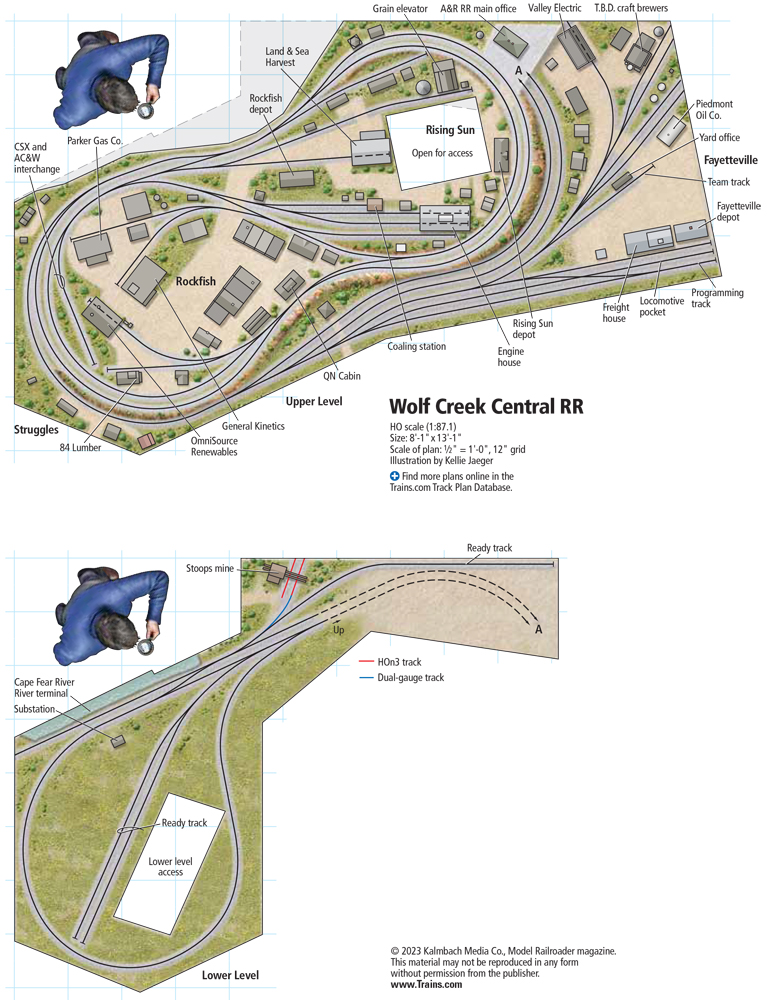
Facts & features Name: Wolf Creek Central RRScale: HO (1:87.1)Size: 8′-1″ x 13′-1″ Prototype: freelancedLocale: southeast North CarolinaEra: 1990sStyle: peninsulaMainline run: 81 feetMinimum radius: 24″Minimum turnout: no. 4Maximum grade: 2.7%Benchwork: L-girderHeight: 48″Roadbed: HomasoteTrack: code 70, 83, and 100 flextrackScenery: Woodland Scenics ground foamBackdrop: Painted tempered hardboardControl: Digitrax DB150 DCC Download a PDF of this […]
Read More…
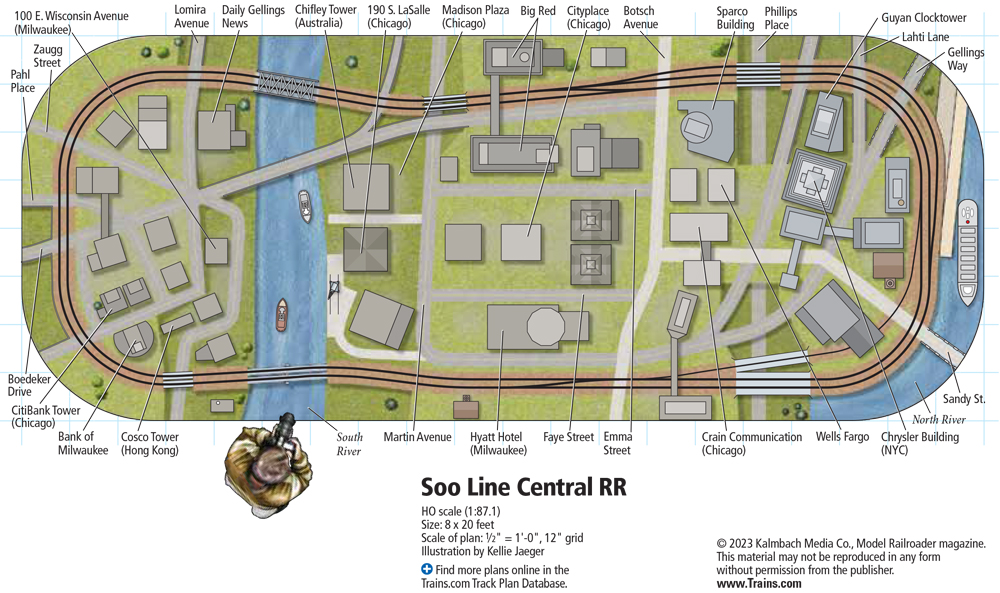
Facts & features Name: Soo Line Central Scale: HO (1:87.1) Size: 8 x 20 feet Prototype: Soo Line, Wisconsin Central, and Canadian National Locale: Chicago Era: 1980 to present Style: island Mainline run: 98 feet (double tracked) Minimum radius: 24″ Minimum turnout: Atlas No. 8 Maximum grade: flat Benchwork: open grid Height: 38″ Roadbed: cork […]
Read More…
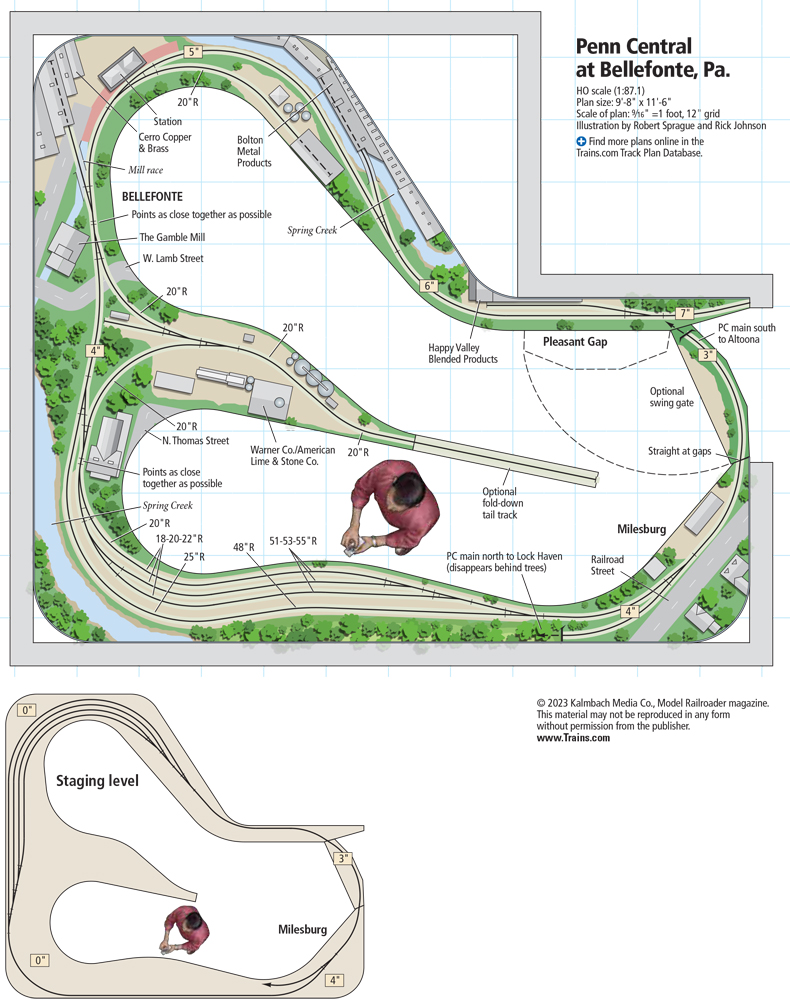
Facts & features Name: Penn Central at Bellefonte, Pa.Scale: HO (1:87.1)Size: 9’-8″ x 11’-6″Prototype: Penn CentralLocale: Bellefonte, Pa.Mainline run: 36 feetMinimum radius: 24″ (main), 18″ (siding)Minimum turnout: No. 6Maximum grade: 4% Download a PDF of this trackplan! Buy the December 2023 issue of Model Railroader! […]
Read More…
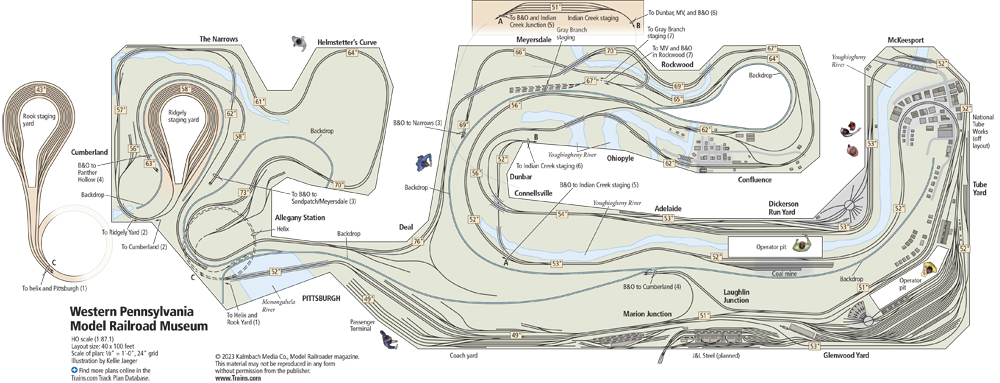
Facts & features Name: Western Pennsylvania Model Railroad MuseumScale: HO (1:87.1)Size: 40 x 100 feetPrototype: Baltimore & Ohio and freelancedLocale: Pittsburgh, Pa., to Cumberland, Md.Era: 1953Style: walkaroundMainline run: Mon Valley, 443 feet; B&O, 357 feetMinimum radius: 36″ (main)Minimum turnout: No. 8 (main), No. 6 (branch lines and yards), No. 4 (industrial)Maximum grade: 2%Benchwork: L-girderHeight: Mon […]
Read More…
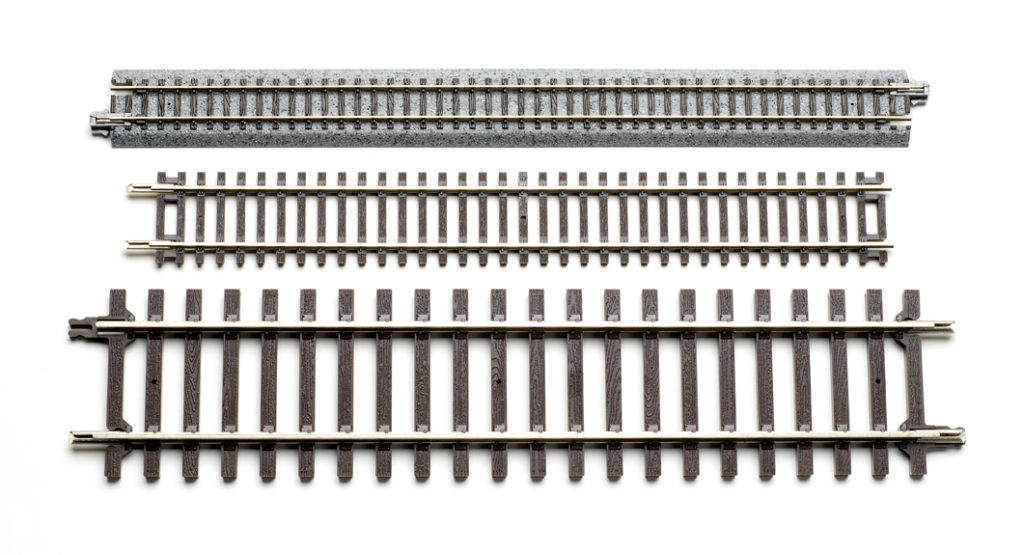
Model railroad track comes in many scales and varieties. At top is a section of Kato N scale Unitrack, an all-in-one type. Next is a piece of Atlas HO sectional track, and at the bottom is a piece of O scale track from Atlas O. The basics of model railroad track: Many hobbyists get […]
Read More…
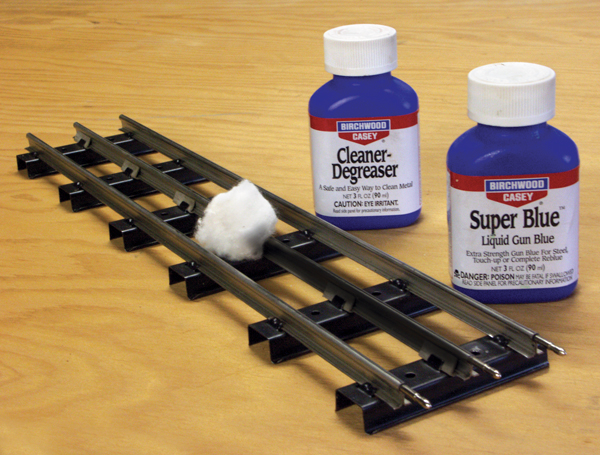
Tips for better tubular track Stamped metal track has been around for more than a hundred years. This “old reliable” track system is very sturdy and works equally well for permanent and non-permanent layouts. I start by darkening the center rail with cold metal bluing compound. Bluing compound is used in firearms restoration and is […]
Read More…
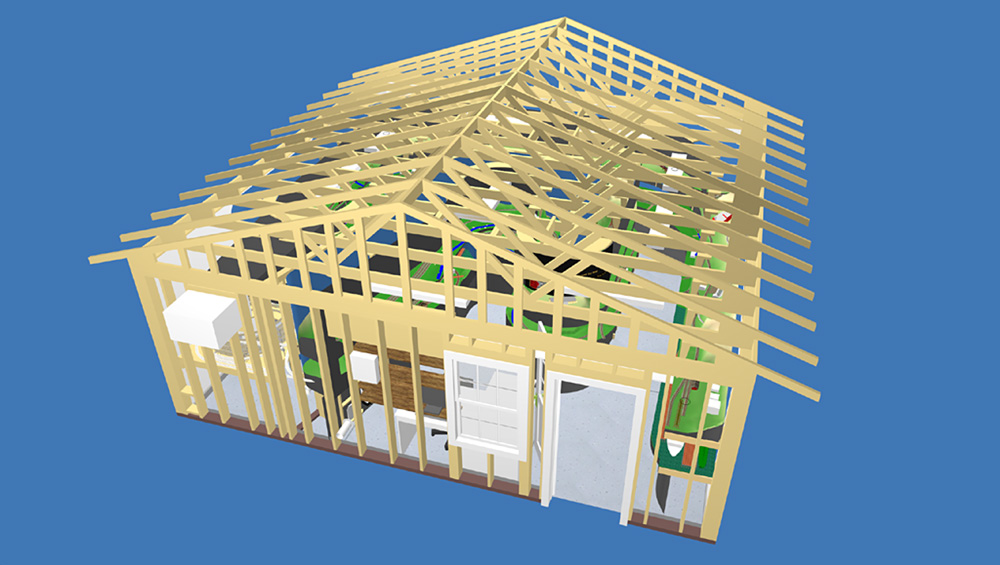
Although pencil and paper still reigns as king of the ways to plan a model railroad layout, computer-aided design (CAD) track planning software is increasingly popular as model railroaders become more comfortable using computers. This is a roundup of current (as of 2023) track planning software designed to give you a good idea of the […]
Read More…
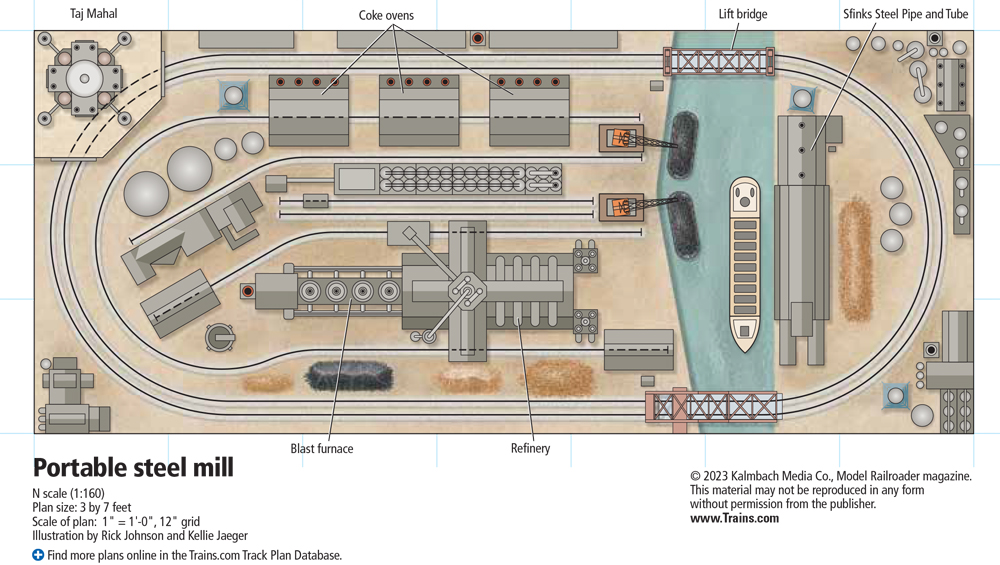
Facts & features Name: Steel mill with a twistScale: N (1:160)Size: 3′-0″ x 6′-8″Prototype: FreelancedLocale: Upper MidwestEra: Mid-20th centuryStyle: IslandMainline run: 17 feetMinimum radius: 11.25″Minimum turnout: NoneMaximum grade: NoneBenchwork: Hollow-core doorHeight: Varies by venueRoadbed: NoneTrack: Kato Unitrack and Bachmann E-Z TrackScenery: Extruded-foam insulation boardBackdrop: NoneControl: Direct-current cab control with Bachmann Auto-Reversing Systems Download a […]
Read More…
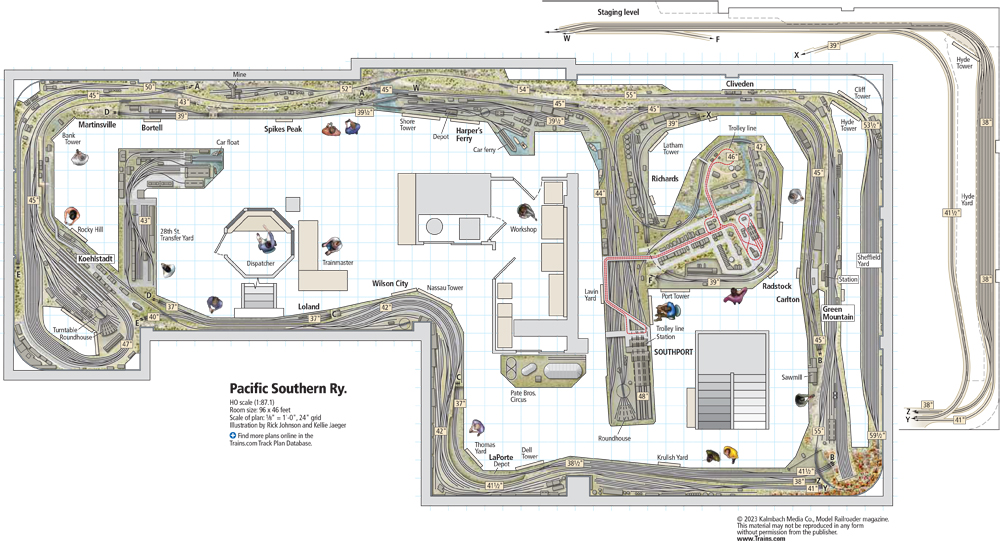
Facts & features Name: Pacific Southern RailwayScale: HO (1:87.1)Size: 46 x 96 feet Prototype: FreelancedLocale: GenericEra: FlexibleStyle: WalkaroundMainline run: 1,000 feetMinimum radius: 48″ (main), 36″ (branch)Minimum turnout: no. 4, some hand-laidMaximum grade: 1.3% (main), 3.1% (branch) Benchwork: L-girderHeight: 36″ to 60″Roadbed: Cork on 1⁄2″ plywoodTrack: Visible track: handlaid code 100 (main), code 83 (yards), code […]
Read More…
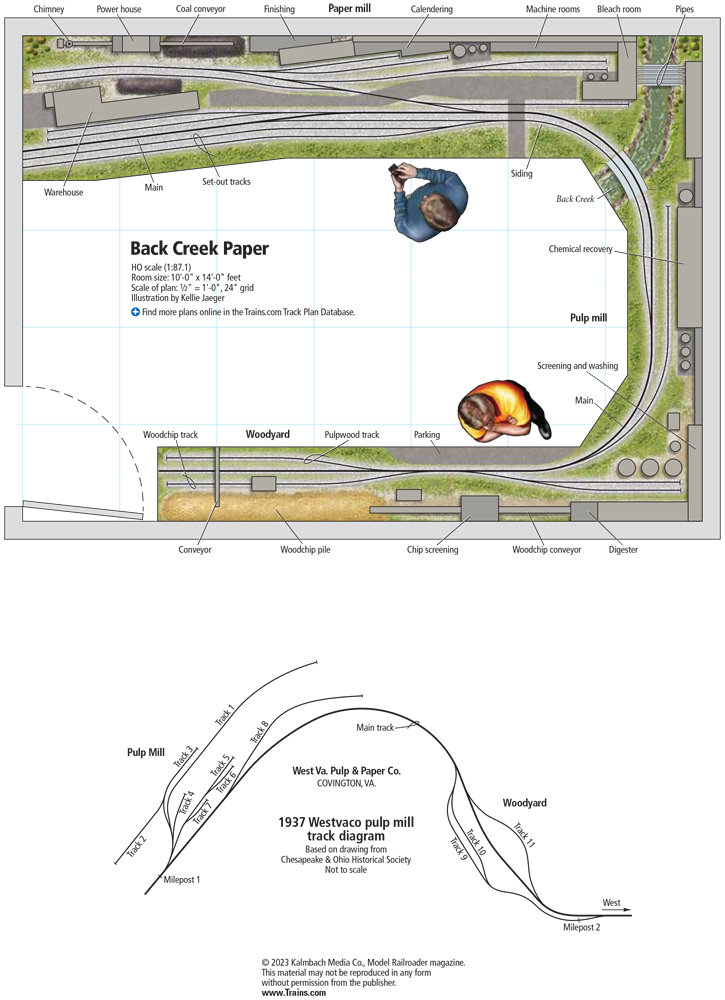
Facts & features Name: Back Creek PaperScale: HO (1:87.1)Size: 10 x 14 feetPrototype: Westvaco Pulp & Paper millLocale: Covington, Va.Era: 1974Style: around-the-wallsMainline run: 28 feetMinimum radius: 30″Minimum turnout: No. 6Maximum grade: none Download a PDF of this trackplan! Buy the October 2023 issue of Model Railroader! […]
Read More…
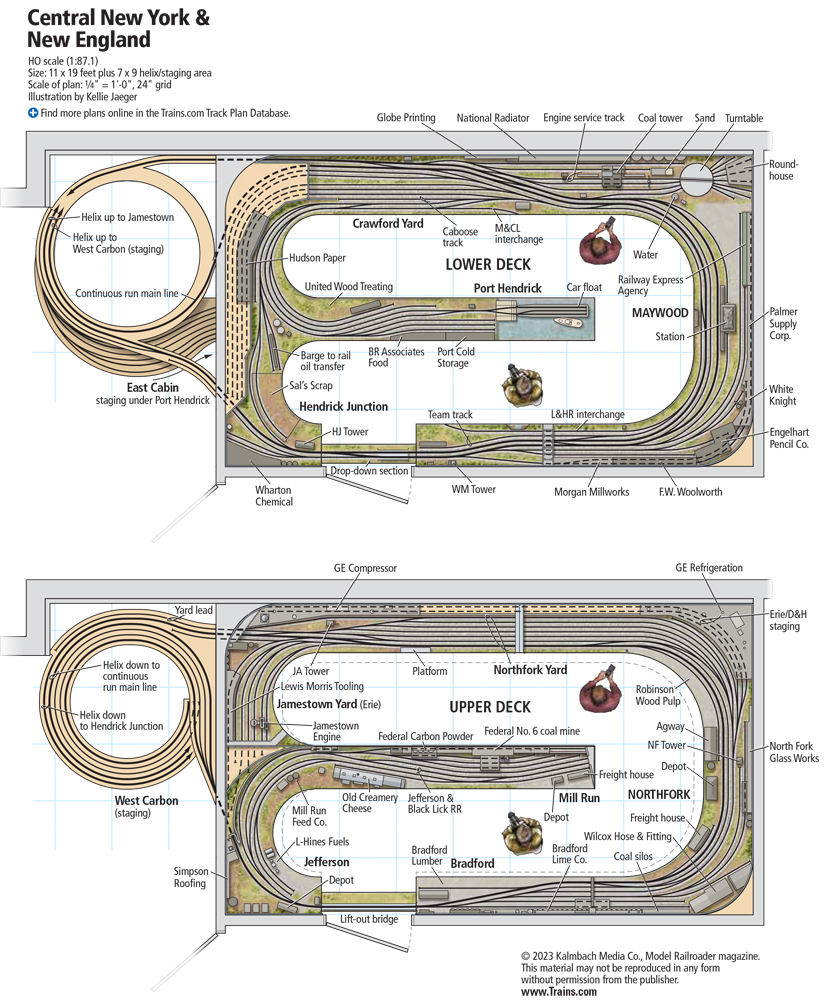
Facts & features Name: Central New York & New EnglandScale: HO (1:87.1)Size: 11 x 19 feet plus 7 x 9-foot helix/staging areaPrototype: freelancedLocale: Maybrook, N.Y., areaEra: mid-1950sStyle: multi-deck walk-inMainline run: 120 feet visible plus 81 feet in helixMinimum radius: 36″Minimum turnout: No. 6 (main), No. 5 (industries)Maximum grade: 1.87% in helixBenchwork: open grid (lower […]
Read More…












